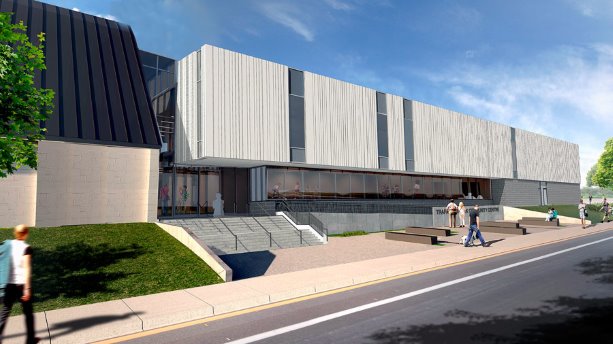The Town of Oakville, Ont. is the first municipality in Canada to use a full Integrated Project Delivery (IPD) approach coupled with lean principles for its Oakville Arena redevelopment project.
Art Winslow, lean IPD director with Graham Group; Shelly Switzer, director of facilities and construction management with the Town of Oakville; and David Dow, principal at Diamond Schmitt Architects, discussed leveraging the benefits of lean IPD on public projects at a seminar during Construct Canada in Toronto late last month.
Switzer first learned about IPD two years ago during the same seminar.
"I sat where you’re sitting now and listened to Art and David talk about collaboration, sharing of risk and reward, the elimination of waste, value added back into the project, guaranteed price, guaranteed schedule, it all sounded way too good to be true," he noted. "At that time we were building a number of major projects in Oakville and, quite frankly, as an owner I was feeling fed up, fighting with designers who didn’t properly co-ordinate their drawings and contractors who made a business out of finding errors in those drawings and charging us, as an owner, 25 per cent over market value to correct those errors."
He thought the model would be a good fit for Oakville’s latest project, which is the renovation and restoration of a 1950s hockey arena and community centre that also includes a seniors centre and fire hall.
In order to fully understand the concept, he visited a lean IPD project and saw first hand the collaboration and co-operation between the owners, designers and trades.
"We were impressed by the collaboration in the room and we came away believing that IPD was a better way to build," said Switzer. "Even the pessimists in that room had to admit that it couldn’t be worse than what we were doing."
Choosing the right team culture and dynamic is critical to project success, he added.
The town hired Diamond Schmitt Architects and Graham Construction and Engineering as a team at the beginning of the project to work with the town through the design and construction phase. Construction is now underway.
Using lean IPD in a municipal setting has its challenges, Switzer explained. The concept was unfamiliar and only a few firms have done it in Canada. Being the first municipality to use the IPD model, they needed to create their own IPD tri-party contract, which they did using a model developed in the U.S. and revising it to suit their needs.
Municipal projects require council approval on many different aspects throughout the planning phase which can take a significant amount of time, he added. Another challenge was the amount of time that town staff must commit, which needs to be budgeted for in their work plans.
"In a traditional project delivery model, the owner rarely interacts with the subconsultants and subcontractor, but on this project all of these people are in the same room as the owner, sharing ideas, making suggestions, discussing the most efficient ways to build the facility, ensuring design work is not being duplicated, finding innovation and eliminating waste," said Switzer. "In addition to the design and construction team members, we also have town staff in the room, these include the people who actually operate the facility."
The cost of the project was also a factor that was carefully considered.
"Because of this process we now know not only what we’re going to build but exactly how we’re going to build it," Switzer noted. "We know what it will cost and what we’re getting for our money and we’ve never had that level of understanding at this stage in any of our previous projects. This outcome alone is a huge success and it was exactly what we were hoping to achieve."
One of the things that separates IPD builds from other projects is that there is one contract signed by a minimum of three parties — usually the owner, architect and contractor.
"Oftentimes our subtrades and subconsultants will also sign the same contract so effectively we’re all tied to the same rules and regulations," explained Winslow.
The financial success is tied to project outcome, so the better the team does at delivering the project, the better the team does financially.
"It’s about changing behaviours, getting rid of the adversarial nature that we typically find in a design-build," said Winslow. "Twenty-five years as a contractor doing design-builds and I can tell you there’s been lots of arguments on those projects but going into this model is an eye-opening experience. We have ‘fierce conversations’ we call them but certainly not adversarial."
A critical part of the collaboration process is called the "big room," Dow explained.
"When you’re in a process where profit is being shared equally among everyone, everyone has the right to see and understand and have input into the process and challenge why decisions are being made because it affects their bottom line alongside everyone else’s," he said. "Transparency is really key and ties heavily into the collaboration."






Recent Comments
comments for this post are closed